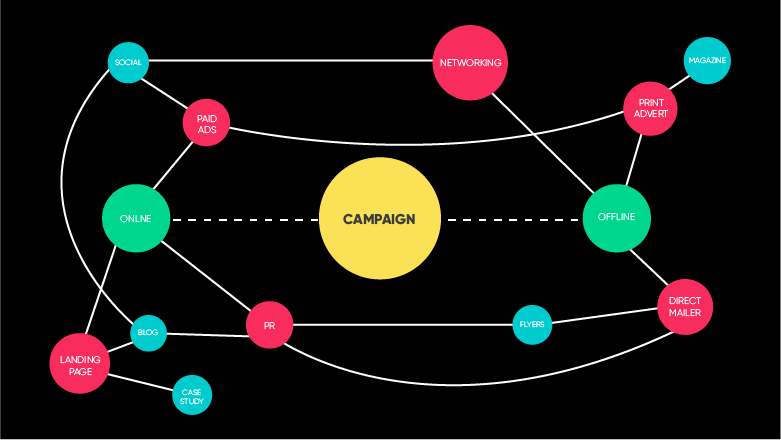21 June 2019
The art of joined-upness — Why integrated campaigns are essential and how to plan for their success
Traditionally speaking, marketing has always been an integration of different channels and approaches as brands try to find the best ways of connecting with their target audiences.
Perhaps customers will be more receptive to a lovely brochure, an email… or a Tweet? Maybe some localised press coverage will help get the visibility you’re after, or maybe your customers are already looking on the web, so perhaps you’d better invest in paid search as well.
How about a zeppelin with your logo plastered on the side?
My point is there are about a million-and-one different aspects to any marketing campaign, and an infinite number of ways to put one together — but only one that can be considered truly ‘integrated’.

Rather than incorporate disparate strategies in an attempt to reach as broad an audience as possible, which is something that often leads to inconsistent messaging and can be very difficult to track and measure, a truly integrated campaign melds all aspects of marketing communication, so they all work together as a unified force.
In other words, it's the delicate art of joined-upness. Now, admittedly, this isn't exactly a universally recognised term, at least not yet (I've heard nothing back from the dictionary chaps about updating their current edition), but you get the idea.
When a campaign is genuinely integrated — joining-up multiple strategies that work congruently towards the same outcome — it not only ensures all messaging remains clear and consistent but also makes it easier to gauge in terms of its overall effectiveness. More to the point, it helps to create a far more seamless and personalised experience for audiences to interact with your brand/enterprise.

Today’s marketing landscape is abundant with communication channels, which can make it incredibly challenging for businesses to captivate audiences when attention spans are rapidly declining. Integrated campaigns have the power to cut through the noise with consistent messaging and content that engages audiences at every level of the sales process; providing an experience that feels genuinely tailored while driving real business outcomes.
Successful integration of your campaign requires thoughtful planning, execution, and performance tracking. It also requires the application of technical and creative elements by a team of specialists in their respective fields. Based on my own experience, managing and co-ordinating successful marketing campaigns for clients in a variety of sectors, here are three key considerations I’ve always found to be the most crucial.
Profile your audience
Sure, you can tailor messaging and channels of communication to each profile. But if their specificities are worlds apart, then you risk compromising the integrity of a single, integrated campaign. It also makes things incredibly more difficult to measure. If your customer-types vary too much, then focus on perfecting one integrated campaign at a time.
Define your objectives
What is the primary purpose behind your campaign; inquiries, conversion, or general brand awareness? As with the point above, it’s always best to simplify your intentions, so they remain clear to your audience and align closely with their own needs.
This will also help shape your messaging, creative, channels of communication, and methodology, as well as giving you something to measure once the campaign has run its initial course.
Formulate a detailed plan
By their very nature, an integrated campaign is comprised of lots of different elements — sometimes all happening at once. Set a framework for your campaign by outlining the individual elements you require, phases of deployment, and follow-up activities.
So, for example, knowing exactly when PR coverage and direct mailers will be arriving on customer’s doorsteps is crucial to ensuring your online collateral (landing pages, videos, social media output, etc.) is there to support all offline activities.
Remember, the key to a successful integrated campaign is to ensure aspects work in conjunction as well as independently — not competing for audience attention but instead supporting the campaign as a whole in its own unique way.
To see one of our integrated campaigns in action, check our work promoting the launch of Aston Barclay's Cascade digital service here
